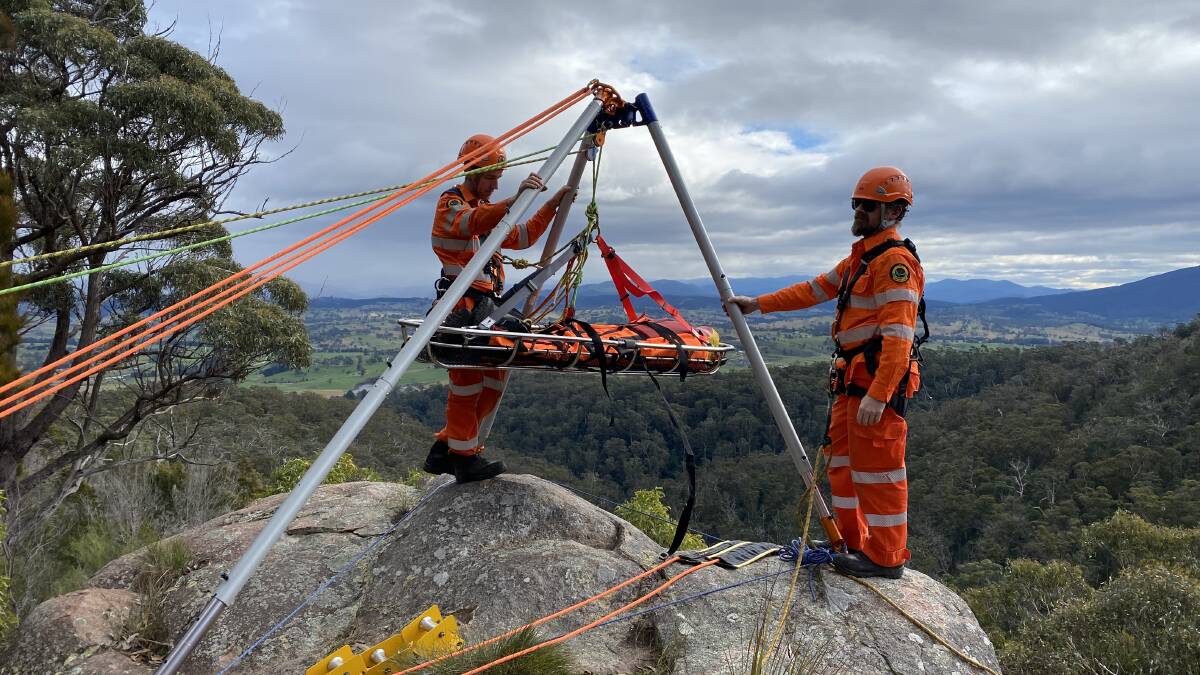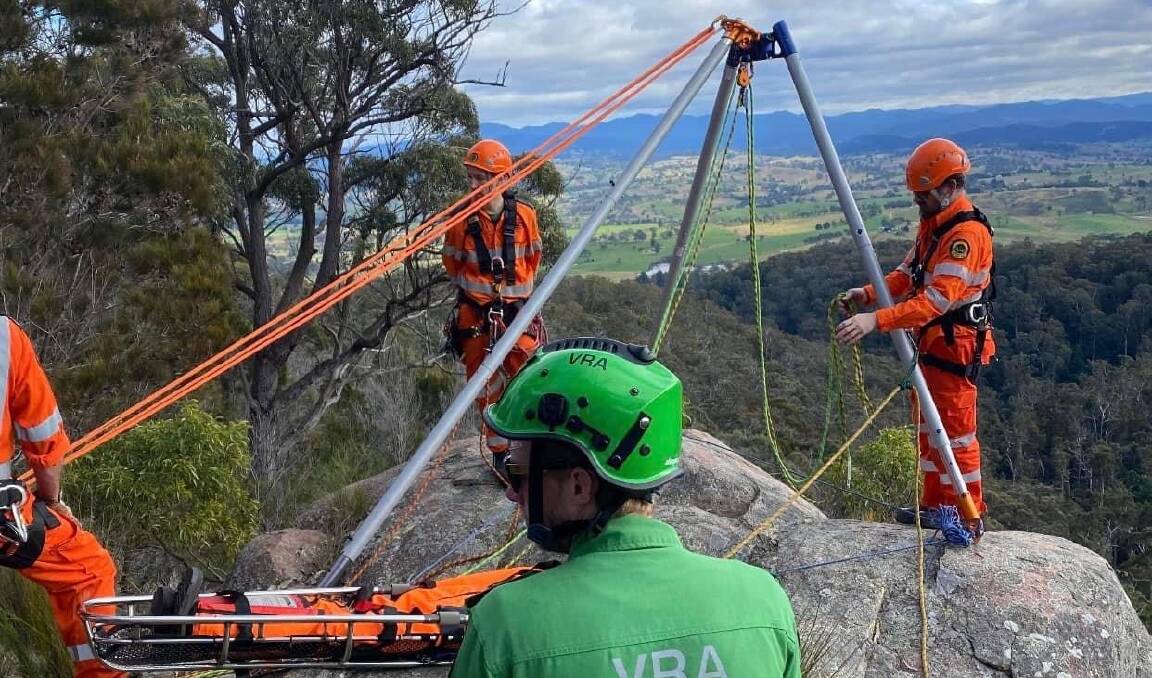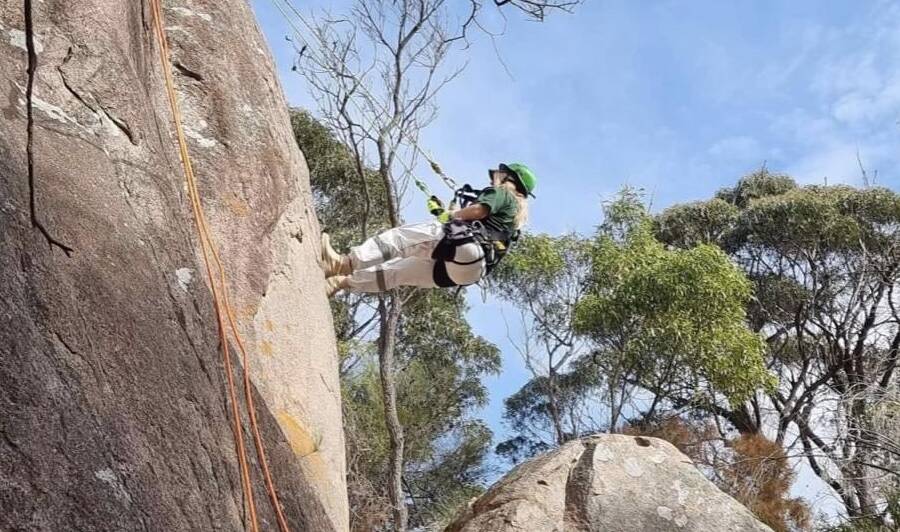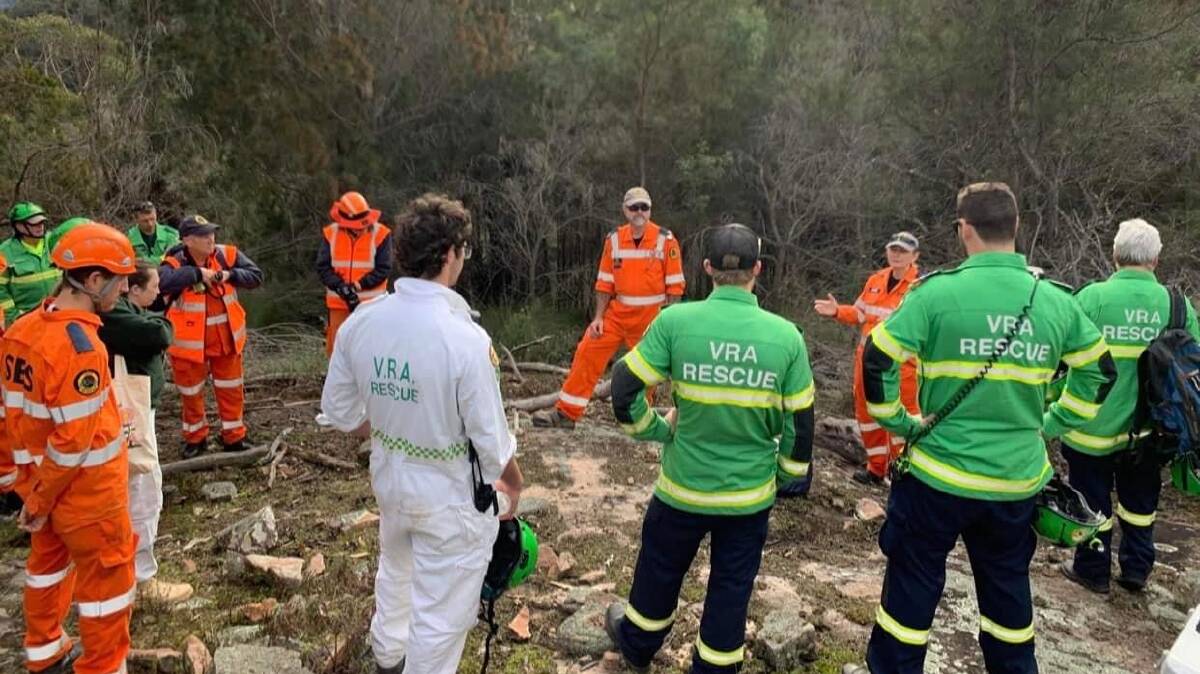
The Bega Volunteer Rescue Association and Bega State Emergency Service crews got together at the weekend to learn how to do vertical rescues using a device called a Vortex Multipod.
Subscribe now for unlimited access.
$0/
(min cost $0)
or signup to continue reading
The teams headed out to Doctor George Mountain on Saturday, July 9, just outside of Bega, to use the apparatus which could be used in the case of an emergency or rescue involving height.
The Eden faction of the SES have been responsible for vertical and general rescue at the south end of the Far South Coast, whereas the Bega VRA have been responsible for vertical rescues from Bodalla down to the Merimbula area.
Since the Eden SES unit had been using a Vortex Multipod for around three years, Sapphire Coast SES unit commander Michelle De Friskbom said the team got together with the Bega VRA to introduce them to the device. The Bega VRA have been using a Larkin Frame, which is a similar device but an older model that was less versatile.
The Vortex Multipod is known as an artificial high direction, meaning that if a causality was at the bottom of a cliff and the emergency service team needed to bring them up in a stretcher, the team could do so safely over the edge of the cliff.

The frame was designed to allow emergency services to drop a rope over a cliff edge or a sharp face, so the ropes were up against the frame instead of rubbing against a dangerous cliff edge.
Ms De Friskbom said it would be impossible to bring someone up over the edge of the cliff with only access to ropes.
"The device sits right near the cliff edge but it sits up higher than the cliff so as you bring the stretcher and stretcher attendant up, you're coming up higher higher than the edge, so then the stretcher is able to be swung onto the top of the cliff," she said.
RECENT NEWS:
"The whole idea of the weekend was to do that cross-levelling of training and demonstrate to VRA how the Vortex actually works, let them know the capability of it, and let them know obviously that we have that capability within SES and just get us working together," Ms De Friskbom said.
She said that all of the emergency services worked together on any major event on the Far South Coast so it made sense for them to work together and have a decent understanding of each organisations capacities.
The Bega RFS was also invited to attend the training, however had to pull out last minute due to sickness among members of their team.

During the training, the SES team was also able to get a better understanding of a new addition to the Bega VRA called a mule - purchased thanks to a grant from Bendigo Bank.
The mule is a fold out frame with a chunky front wheel that a stretcher could be laid out on or gear carried in on. It could then rolled out across difficult terrain, such as in the bush or on a sandy beach.
"Instead of having four or six people trying to carry a stretcher, everything can be placed on that frame and it just can basically just be pushed along. It makes it a lot easier than trying to carry a person on a stretcher," Ms De Friskbom said.

Bega VRA training officer Bowen Finnerty said the organisation was excited to be shown the potentials of the Vortex system and had since decided to investigate grant funding options in order to purchase the device for its team.
He said the organisation would use the device to carry out rescues of rock fishermen along the coastlines or bushwalkers that were injured. It could also be used in the case of an industrial rescue such as at a building site where someone needed to be lifted up stairs or onto different levels.
"That's why we brush up our skills with all our emergency services because if something does happen, us as the primary vertical rescue for this area, if we do need assistance or back up, it's handy to have the Bega SES there to give us a hand," he said.
Love your regional news? Then sign up for the Voice of Real Australia, daily news from across the country delivered free to your inbox


